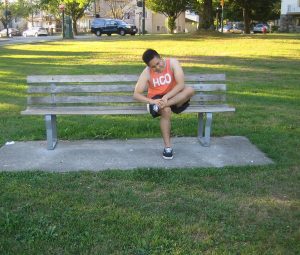A sprained ankle is a usual form of musculoskeletal injury. It is common in sports but can also occur during daily activities. An unnatural twisting movement of the ankle joint can occur if the foot is awkwardly planted when the ground is uneven or if an unusual degree of force is placed on the joint.
What are the causes?
The ankle ligaments are damaged if excessive stretching force is applied. This is likely to occur if the foot is turn inwards or inverted.
The injury can occur in the following ways:
- Awkward planting of the foot while running, stepping up or down or when performing simple tasks such as moving out of bed
- Stepping on uneven surfaces such as a hole
- During sports where one player steps on another
- Inversion injury where the foot rolls inwards
What are the signs?
Damage to the tissues and inflammation occur once an individual ends up with a sprained ankle. The blood vessels start to leak and enable fluid to seep into the soft tissue bordering the joint.

The white blood cells accountable for inflammation move to the site and the blood flow surges.
The usual signs of inflammation include the following:
- Swelling
- Pain due to the increasing sensitivity of the nerves. The discomfort is worsened if the painful area is palpated or the foot is moved in various directions.
- Warmth and redness due to the increased blood flow to the site
Home remedies for a sprained ankle
Home treatment can help lessen the pain and promote healing. Since most of the pain is triggered by inflammation, the objective is to reduce and prevent inflammation.
The RICE method is the commonly used approach:
- Rest – this aims on preventing injury and avoid strain on the already swollen tissues. The ankle joint can rest by using a splint or brace. For severe cases, crutches are used.
- Ice – this is the ideal treatment for a sprained ankle which reduces the pain. The cold works by counteracting the increased flow of blood to the site of injury. If applied right after the injury, it prevents worsening of the inflammation.
- Compression – this provides support as well as averting inflammation. An elastic wrap can be utilized to immobilize the ankle but make sure that it is not applied too tightly.
- Elevation – this helps the body absorb fluid that seeped into the tissues. The affected ankle must be raised above the level of the heart.
Anti-inflammatory pain medications such as naproxen and ibuprofen can be given to reduce the pain and swelling.
Quick Note / Disclaimer
The material posted on this page on a sprained ankle is for learning and educational purposes only. To learn to recognize the signs and how it is managed, register for a first aid and CPR course with Ottawa First Aid.
